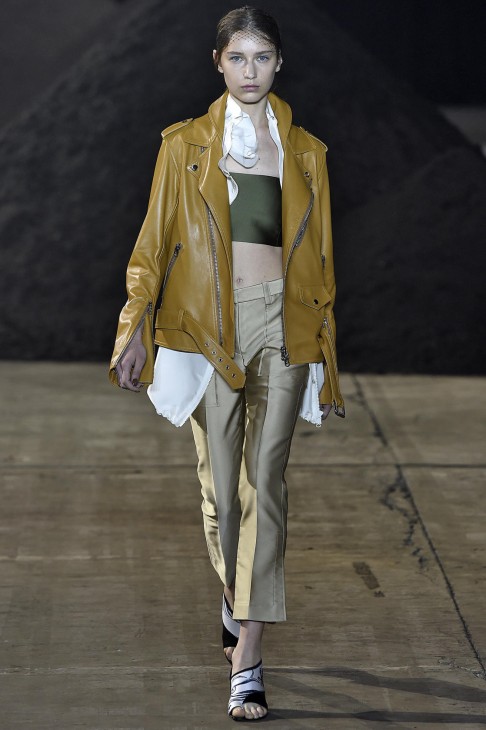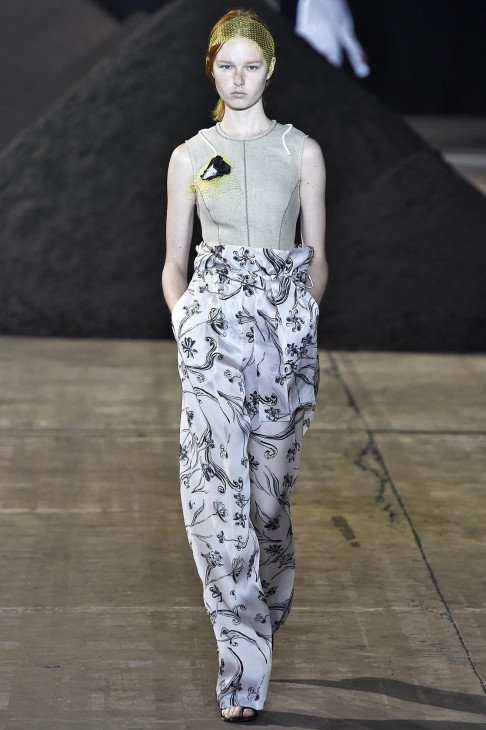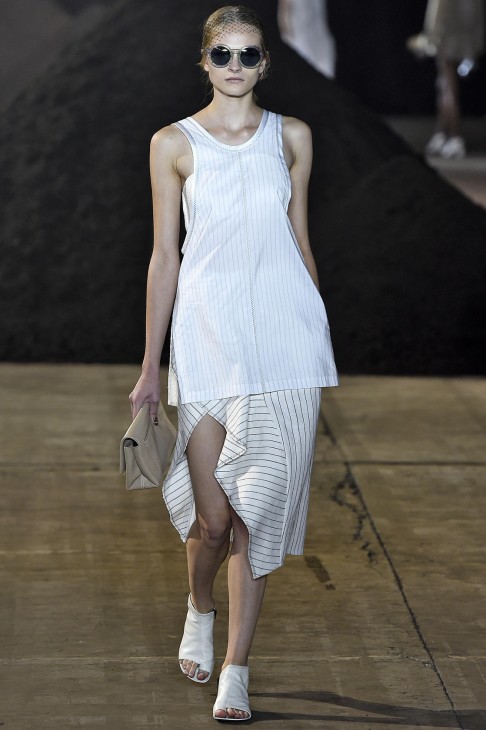
Fashion designer Phillip Lim celebrates 10 years in the industry
As he celebrates a decade of his label, Phillip Lim tells Divia Harilela it's time to stop and smell the flowers
Chinese American designer Phillip Lim dug deep to celebrate 10 years in the industry last month. His spring-summer 2016 show, held at New York City's Pier 94, included a sculptural installation by artist Maya Lin featuring mounds of toxin-free compost that would later be distributed to community gardens around Manhattan.
When the show started, models emerged in earthy floral prints, which later clashed with pinstripes or bloomed into appliqués. Also peppered throughout the collection were reinvented classics that have become synonymous with his label, such as the white shirt dress, paperbag trousers and leather jackets. His message to the world: it's time to stop and smell the flowers.
"I didn't want the clothes to feel retro, or a re-edition of what we had done in the past. I am about right now, not yesterday or tomorrow. I wanted to say, hey we are doing OK, let's slow down and appreciate things. We may be 10 years old but sometimes I feel 100 years old. Stop and smell the flowers may be a cliché title, but everyone understands it. It's really resonating in the fashion world today," he says.

Lim's trajectory in the industry has been almost meteoric. Born in Thailand and raised in California in the 1980s, he never formally trained to be a designer. But it didn't stop him from pursuing a career in the business, first working at department store Barneys before becoming a design assistant at cult brand Katayone Adeli.
In 2000 he co-founded a contemporary line called Development, until his partners went their separate ways four years later. It was then that his now business partner and textile magnate Wen Zhou approached him with an idea to launch his own brand, and thus 3.1 Phillip Lim was born (he was 31 at the time, hence the brand's name).
Since then, Lim has managed to achieve the holy grail of fashion in that he is both a commercial and critical success. He has received many awards, including the CFDA Swarovski award for womenswear in 2007 while the award for menswear followed in 2012. He is also a firm celebrity favourite - the long list includes Solange Knowles and Jessica Alba - but his designs still resonate with real women everywhere.

The numbers prove it - the brand has more than 400 points of sale and 16 free-standing stores worldwide including in Hong Kong. Insiders estimate the company's annual revenue to be more than US$100 million. All of this is impressive considering that his designs are more evolutionary than revolutionary.
"People forget that revolutions take time. Nowadays there is no time. We are constantly pushed to have revolutions, but for whom? Who is benefiting? Is it really for our true customers? I am interested in core customers - they want to have a thread, they are looking for a chance to feel, understand, and appreciate our clothes," he says.
"Our collections are about moving the needle. There are three particular genres I love and love to work with that have percolated in my work for 10 years - romanticism, athleticism and leisure."
I like having conversations with my clothing - they are like your best friend - they are supportive, look good and fix you when you are down
These themes may be commonplace on most catwalks these days, but when he first launched in 2005 Lim was considered a pioneer for more than just his take on pragmatic dressing. Back then he paved the way for what is now referred to as the contemporary category by creating affordable designs that spoke to a luxury consumer thanks to their high quality, innovative fabrics and unique details.
While this gap in the market helped propel the brand initially, things have evolved 10 years on. Today, the contemporary category is overrun with new brands from the US and Europe, resulting in many insiders comparing it with fast fashion - something that Lim objects to.
"There's been this confusion between what we do and fast luxury. If you speak to any young person in the industry and ask them where they would buy a suit, they say Zara. You can't hate that, because that's their vocabulary," he says.
"For me it is about how to participate in this realm that we helped introduce but to do it in a way that has integrity.
"You see it in our technique, in the construction. There's something in what we create that you can't put a word to - an essence. I like having conversations with my clothing - they are like your best friend - they are supportive, look good and fix you when you are down."

Fortunately for Lim, he also kept his best friend and business partner Wen Zhou close ever since she invested US$700,000 in his brand. Today she continues to be a driving force behind the company, working on the business side while Lim focuses on the design. Thanks to her acumen, the company has been able to grow in the right markets, including her native China.
"I think people who try to create a brand themselves are crazy - you have to be looney. The sacrifices, the ups and downs, its fun to celebrate but it's not worth it for just the ego of one. I don't subscribe to this idea of the creator being omnipotent - it just sounds torturous," he says. "Wen has been instrumental in making us a success and keeping me sane. Look at China; we've actually pulled back because she had the foresight to know that the success was not sustainable. People have this perception that the Chinese will buy anything but they are not like that. We think China will stabilise eventually - it's not different from anybody in the fact that it's governed by the laws of nature. There'll always be an equilibrium," he says.

In the meantime, the future for Lim is still coming up roses. He says he wants to continue growing the brand organically and is contemplating moving into new categories such as fragrance (he already has menswear, accessories and a children's line).
"We started with no vision. After 10 years what is important is to have balance - if we overdevelop and balance is taken away from a person, no one is happy," he says.
Lim constantly reminds his team about what it was like to be a 10-year-old child, and their knowledge at that age as a way of talking about this milestone.
"There's so much more we have to learn and do," he says.

